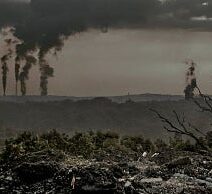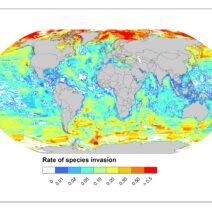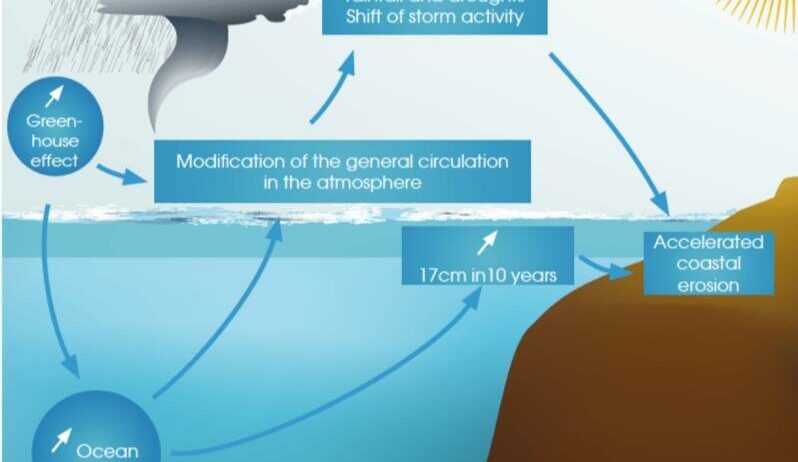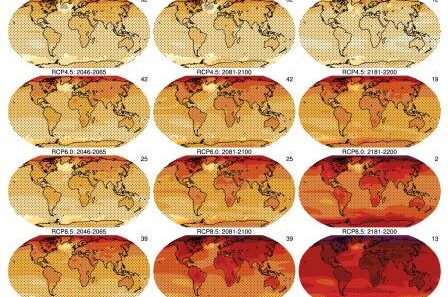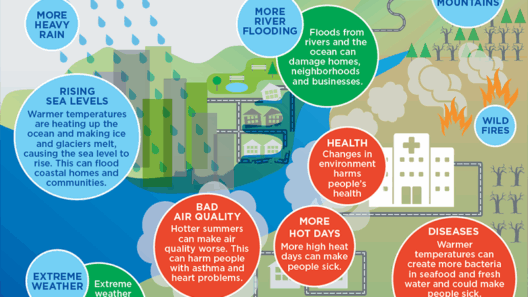Large bodies of water, encompassing oceans, seas, lakes, and rivers, wield a transformative influence over our planet’s climate. Their vast expanses possess intrinsic properties that enable them to regulate temperature, weather patterns, and atmospheric compositions, clearly establishing their pivotal role in the Earth’s climatic balance. To comprehend this phenomenon, it is essential to explore the mechanisms by which these aquatic giants orchestrate climate regulation and the implications for global ecosystems and human societies.
The ocean, as the largest reservoir of water, dominates climate regulation more than any other body of water. Covering approximately 71% of Earth’s surface, it serves as a significant heat sink, absorbing solar radiation and redistributing thermal energy across the globe. This process is primarily facilitated by ocean currents, which act as conveyors of heat. For instance, the Gulf Stream transports warm water from the tropics to the North Atlantic, influencing weather patterns in adjacent land areas and maintaining temperate climates in regions such as Western Europe.
Moreover, seas and oceans influence precipitation patterns. Evaporation from water surfaces generates humidity, which condenses to form clouds and precipitation. Consequently, environments adjacent to large bodies of water typically exhibit higher levels of precipitation, fostering lush ecosystems. Conversely, regions situated far from these aquatic entities may experience aridity, showcasing a stark contrast in climatic conditions due to their geographical separation from moisture sources.
The intricate interplay between oceanic and atmospheric components exemplifies the complexity of climate systems. Ocean temperatures directly affect the atmosphere via a process known as the ocean-atmosphere interaction. Warmer ocean waters can lead to increased storm intensity and altered weather systems, culminating in the phenomenon of climate change. The correlation between rising sea surface temperatures and the frequency of extreme weather events exemplifies the consequential impact of large water bodies on climatic stability.
Lakes and rivers, albeit smaller than oceans, also have their distinct roles in climate regulation. They exhibit similar thermal properties that allow for local climate moderation. Large lakes can ameliorate temperature fluctuations and act as buffers against extreme weather, thereby supporting biodiversity and providing a sanctuary for various species. In temperate climates, the presence of these freshwater bodies can create microclimates that enhance agricultural productivity and sustain ecosystems eager for hydration.
The role of water bodies in carbon sequestration is another key factor in climate regulation. Oceans, particularly, absorb significant amounts of carbon dioxide from the atmosphere—a mechanism that helps mitigate the impact of greenhouse gases. Phytoplankton, the microscopic organisms residing in the ocean, play a crucial role in this process. Through photosynthesis, they consume carbon dioxide and release oxygen, producing a harmonious balance essential for sustaining life. As oceans become increasingly acidic due to elevated carbon intake, their capacity to act as carbon sinks may diminish, posing a dire threat to marine biodiversity and global climate health.
Additionally, the relationship between ice-covered regions and the global climate system presents a compelling facet of the climate regulation narrative. Polar regions, characterized by vast ice masses, reflect a significant portion of solar radiation back into space due to their albedo effect. However, as global temperatures escalate, these ice caps are receding alarmingly, leading to increased heat absorption by the ocean. This feedback loop exacerbates climate change, as the loss of ice further accelerates warming and alters marine ecosystems.
The consequences of this dynamic are profound, impacting not just oceanic systems but terrestrial ecosystems and human communities interconnected with these water bodies. Coastal regions face the imminent threat of rising sea levels, which threaten habitats, infrastructure, and livelihoods. The displacement of human populations and loss of biodiversity owing to changing ecosystems highlight the urgent need for comprehensive strategies aimed at preserving our water bodies, ensuring their continued role in climate regulation.
As stewards of the environment, it is imperative to advocate for the conservation and protection of large bodies of water. Sustainable practices, such as reducing pollution and limiting emissions, are essential to safeguard these vital resources. Furthermore, supporting research that enhances understanding of water–climate interactions is crucial in devising adaptive strategies to counter the impacts of climate change. Empowering communities through education and engagement can foster a culture of responsibility and proactive stewardship of aquatic ecosystems.
In summary, the multifaceted roles of large bodies of water in climate regulation underline their indispensable place within the Earth’s climatic system. As we delve deeper into the myriad interactions between aquatic environments, atmospheric phenomena, and terrestrial life, it becomes clear that nurturing these precious resources is not merely an environmental issue; it is a moral imperative for future generations. Embracing a holistic approach to climate understanding will pave the way toward a sustainable and resilient planet, where humans and nature coexist harmoniously. The ocean, lakes, and rivers are not only vital ecosystems—they are integral players in the intricate dance of climate regulation that shapes our world.

